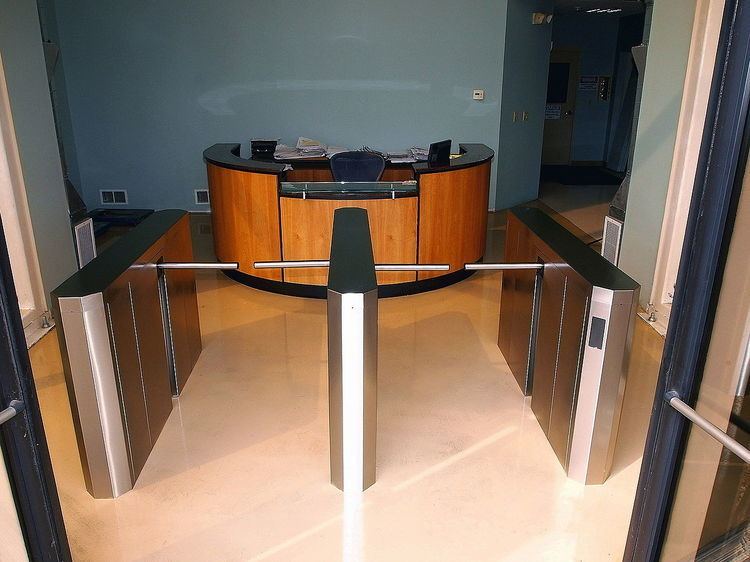 | ||
An optical turnstile is a physical security device designed to restrict or control access to a building or secure area. Optical turnstiles are usually a part of an access control system, which also consists of software, card readers, and controllers. Optical turnstiles operate much like regular mechanical turnstiles, except that they rely primarily on electronic (infrared) beams, and audible/visual interfaces to control entry. Rather than physically restraining a person, the optical turnstile uses sounds and lights to alert others to attempted entry by unauthorized individuals. For this reason, they are not likely to be used in subways and stadiums, as they are suited for settings where design and aesthetics are important, such as lobbies. They are perfect for high rise buildings with a single path through the lobby and staffed reception. The rate of people passing through the optical turnstile is high, with less delay than other methods. They are also suitable for the handicapped, as they are barrier-free.
Early optical turnstiles used programmable logic controllers and banks of relays to control the access card and infrared sensor inputs and the indicating lights and audible outputs. These older designs required a large control footprint and were complicated.
The first optical turnstiles were developed in the late 1990s for the San Francisco market by Omega Corporate Security of Walnut Creek, California. Early installations included Charles Schwab, East Bay Municipal Utility District, and Wells Fargo.
The optical turnstile products have evolved with technological advances over time. Many security entrance lanes today are optical turnstile portals employing moving, mobile barriers of metal, glass or acrylic in some cases. The barriers can be drop arms, swinging glass, retractable (sliding) glass, or other materials. The sensing technology has improved to a higher level of security violation detection, as well as to allow for faster throughput. Longer cabinets are sometimes used to increase throughput. Trolley detection is employed to discern between tailgate/piggybackers and roller bags and luggage. Many security optical turnstiles are IP network ready, and certified for mechanical and electrical safety via UL325 or UL2593 standards by nationally recognized testing labs.
